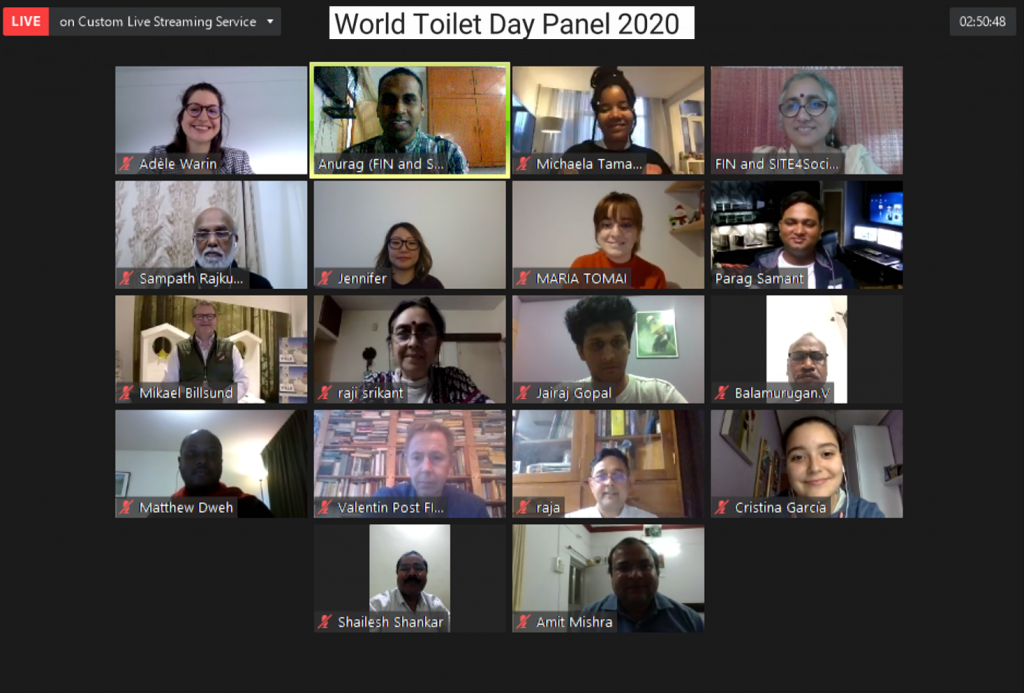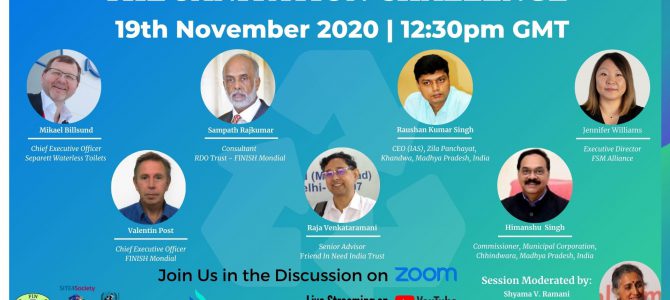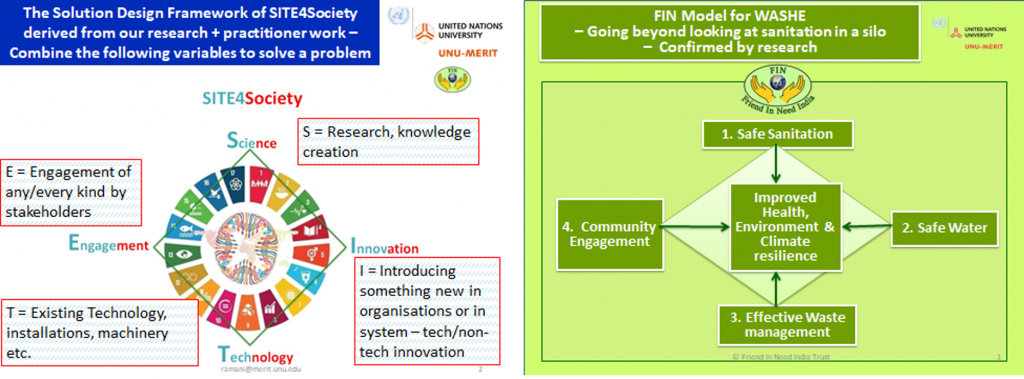The Sustainable Development Goals Report (2020) notes that we are far from being an open-defecation free world. Since 2015, around 500 million low cost toilets have been diffused, but still about 2 billion people do not have access to a functioning toilet and about 4.2 billion people are using toilets that cannot be considered to be safely managed. Furthermore, around 20% of the health-care facilities worldwide do not have toilets; while about 620 million school children (almost twice the population of the USA) do not have decent school toilets. To top it all, many of the millions of toilets that have been constructed are not being used, either because they are falling apart as they have not been built to last, or because the household members are averse to maintaining a toilet and/or changing their behavioural routines. These are the many faces of the sanitation challenge in low-income and middle-income countries, which must be addressed, because diarrhoeal diseases, a direct consequence of poor sanitation, are still the leading cause of mortality and morbidity in these regions.
Thus, Friend-In-Need India (FIN) and Fusion Waste Management, teamed up with SITE4Society, UNU-MERIT, to invite leading sanitopreneurs to share their insights, on November, 19 – World Toilet Day. The SITE framework developed by Prof. Shyama V. Ramani, with students at FIN and UNU-MERIT is founded on the assumption that to solve societal challenges, science, innovation and technology are very important, but the mere existence or creation of science, innovation and technology is not enough. They must be combined with real engagement, outreach and communication by multiple stakeholders such as policy makers, public agencies, firms and citizens. Easier said than done! How is engagement to be achieved? Read on to learn from the experiences of our change makers!
Great sanitation-technology solutions need novel cost-sharing platforms: Separett is a Swedish, family owned company that has developed waterless toilets. Their model is a chic urine diverting dry toilet that separates urine and faeces and transforms the latter into compost. Technologically speaking, it is a circular sustainable sanitation system that closes the loop completely recycling the faecal waste without environmental contamination with two caveats – a price tag of about 600 euros and the challenge of handling the faecal sludge.
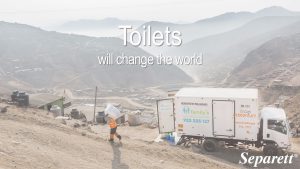 Still Mikael Billsund, the founder of Separett, is not only selling these toilets successfully in Europe and the USA, but also changing the lives of many in Lima, Peru. Separett partners with the social enterprise X-runner, in a consortium supported by donor agencies. X-runner project installs a portable Separett toilet in 30 minutes for free and a collection team employing many women collects the faecal waste on a weekly basis and distributes it to farmers. A customer support team monitors the users’ experience to ensure satisfaction – all for a very small monthly fee of 10 euros. Thus, both accessibility and usability are ensured along with employment and value creation.
Still Mikael Billsund, the founder of Separett, is not only selling these toilets successfully in Europe and the USA, but also changing the lives of many in Lima, Peru. Separett partners with the social enterprise X-runner, in a consortium supported by donor agencies. X-runner project installs a portable Separett toilet in 30 minutes for free and a collection team employing many women collects the faecal waste on a weekly basis and distributes it to farmers. A customer support team monitors the users’ experience to ensure satisfaction – all for a very small monthly fee of 10 euros. Thus, both accessibility and usability are ensured along with employment and value creation.
Why is Mikael doing all this? He explains, “In developing countries, urban areas often don’t have a sewage system or water. We need to invest 262 billion annually for the next 10 years to ensure universal sanitation! In the meantime, globally 800 children are dying every day. I don’t want to wait. We should not wait. We have the technology for places without a sewage system or water. We just need to find innovative ways for cost-sharing with public agencies and collaborations with NGOs to diffuse safe sanitation through creating business opportunities and capabilities around faecal sludge management.”
(for details – see video)
The 4-stakeholders ‘diamond’ model as a tool for sanitation diffusion:
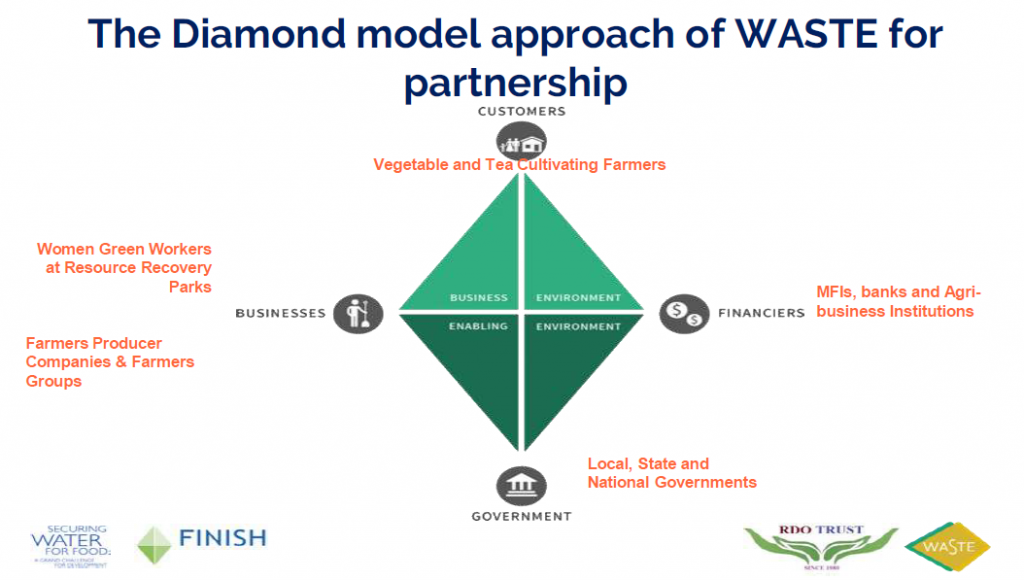 FINISH Mondial (Financial Inclusion improves Sanitation and Health) a social enterprise, has successfully completed large scale sanitation system installations in India and Kenya through a diffusion design that addresses both the demand and supply sides of the sanitation market in terms of material flows, capabilities mobilization and finance. Their ‘diamond strategy’, targets 4 domains: communities, businesses, financiers, and the government. Valentin Post, a co-founder of FINISH, pointed out that: “When we started FINISH in India in 2009, India had the highest open defecation rate in the world. But big problems can also be big opportunities and India is a country where you can easily innovate, where you can do things, and then bring it to scale. Large scale projects often render economies, which can help you do your business differently, say generate business and social innovations. That said, it is essential that the partners from the community, business, finance and government are capable and in agreement about the shared project vision.”
FINISH Mondial (Financial Inclusion improves Sanitation and Health) a social enterprise, has successfully completed large scale sanitation system installations in India and Kenya through a diffusion design that addresses both the demand and supply sides of the sanitation market in terms of material flows, capabilities mobilization and finance. Their ‘diamond strategy’, targets 4 domains: communities, businesses, financiers, and the government. Valentin Post, a co-founder of FINISH, pointed out that: “When we started FINISH in India in 2009, India had the highest open defecation rate in the world. But big problems can also be big opportunities and India is a country where you can easily innovate, where you can do things, and then bring it to scale. Large scale projects often render economies, which can help you do your business differently, say generate business and social innovations. That said, it is essential that the partners from the community, business, finance and government are capable and in agreement about the shared project vision.”
(for details – see video)
Sampath Rajkumar, from the Rural Development Organisation Trust or RDO, a partner in the FINISH programme since inception explained how they put into action the FINISH diamond model in the isolated hilly district of Nilgiris in India. “One of our most circular initiatives with FINISH is the Water for Food program. Here, we are providing farmers with low cost rich fertiliser by co-composting biodegradable waste with faecal sludge. More than 600 tonnes of co-compost have been produced and distributed after being tested for chemical contaminants and biological pathogens. The government installed the resource recovery parks, FINISH provided the technical help and both RDO and FINISH worked to raise the financial resources of about USD 230, 000 from public and private sources, and finally RDO acts as the community focal point for 2,243 farmers in the programme.”
(for details – see video)
Transforming Society through a public programme: The Swachh Bharat or Clean India Mission (SBM)
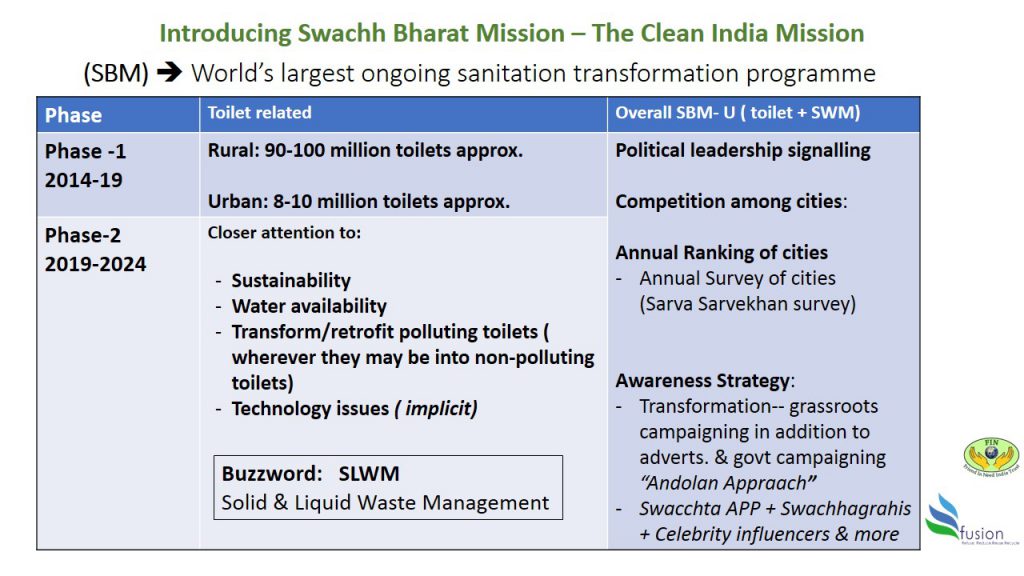 Claimed as the world’s biggest cleanliness drive, the SBM is indeed an enormous sanitation transformation programme. As Dr. Raja Venkataramani of FIN explained, “To make India open defecation free (ODF) and clean, under Phase 1 of the programme (2014-2019) the focus was on construction of toilets all over India (about 100 million toilets and 10 million in rural and urban India respectively). Then, under Phase 2 (2020-2024), attention has expanded to include water availability and quality, sludge and septage management and hygiene behaviour. These are referred to ODF+ and ODF++ targets for safe liquid and solid waste management – including faecal sludge. Capacity building of governing bodies and community engagement building are core activities to achieve the targets. To evaluate progress, a heavy investment on extensive data collection has been made, which in turn yields a ranking of municipalities in terms of their SBM target attainments. Thus, interestingly, for effective implementation, silos between different layers of governance and between citizens and government are being broken.”
Claimed as the world’s biggest cleanliness drive, the SBM is indeed an enormous sanitation transformation programme. As Dr. Raja Venkataramani of FIN explained, “To make India open defecation free (ODF) and clean, under Phase 1 of the programme (2014-2019) the focus was on construction of toilets all over India (about 100 million toilets and 10 million in rural and urban India respectively). Then, under Phase 2 (2020-2024), attention has expanded to include water availability and quality, sludge and septage management and hygiene behaviour. These are referred to ODF+ and ODF++ targets for safe liquid and solid waste management – including faecal sludge. Capacity building of governing bodies and community engagement building are core activities to achieve the targets. To evaluate progress, a heavy investment on extensive data collection has been made, which in turn yields a ranking of municipalities in terms of their SBM target attainments. Thus, interestingly, for effective implementation, silos between different layers of governance and between citizens and government are being broken.”
(for details – see video)
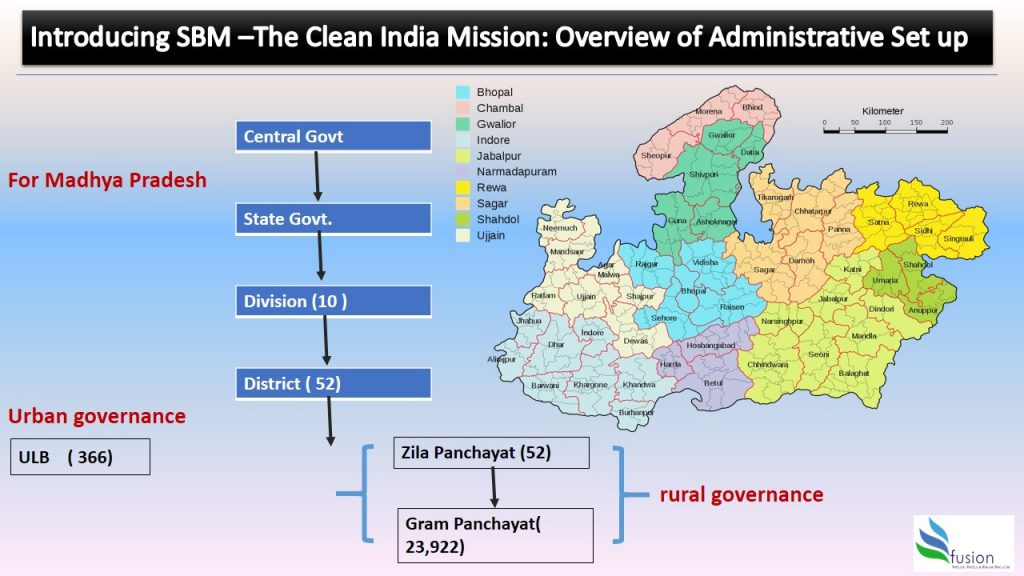
Mr. Amit Mishra, founder of Fusion waste management, a social enterprise working with the municipality of Khandwa, a city with a population of around 2 million added: “Over the last year we have managed to improve Khandwa’s ranking from 94 to 21 through construction of public toilets, public waste bins and building awareness through community engagement sessions and workshops in schools. SBM provides a good tool kit in terms of indicators by which monitoring on cleanliness status can be implemented for data entry. For example, there are performance indicators for public toilets, community toilets and urinals on their state of cleanliness and user friendliness. An inspector would be required a particular representative sample of toilets and answer the queries with either a YES or a NO. Having clarity about performance measures and competition between municipalities is really helping to increase efforts for transformation.”
(for details – see video)
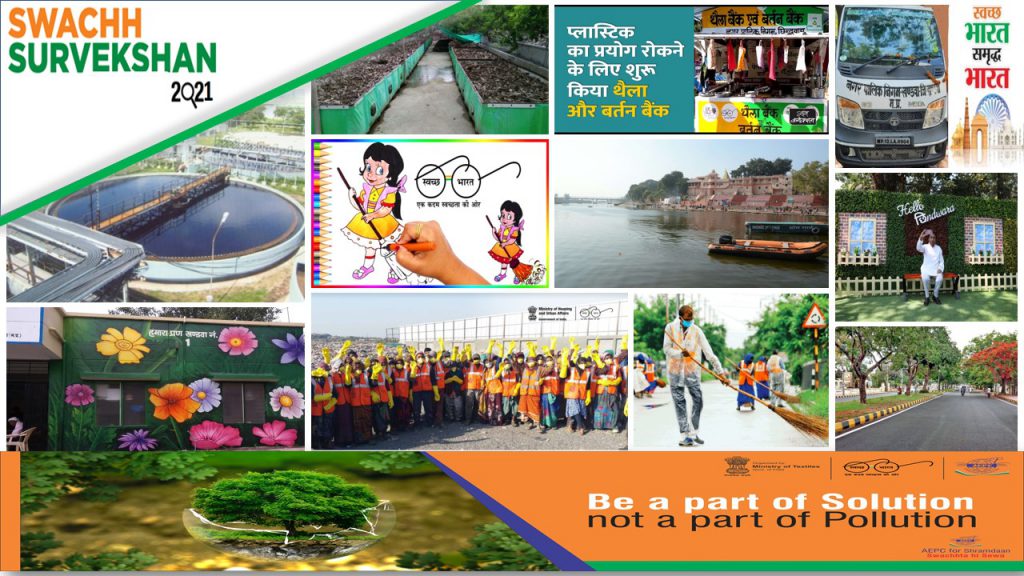

This all-hands-on-deck approach was further reiterated by Mr. Raushan Kumar Singh the Indian Administration Officer, who is the Chief Executive Officer of Zila Panchayat Khandwa (i.e. the peri-urban and rural zones around Khandwa containing a population of about 1.3 million). Under his guidance Khandwa ranked first nationally in terms of ‘River Revival’. He is leading the rural team in Khandwa district and has received acclaim for the construction of modern user friendly toilets equipped with amenities like hand dryers, sanitary pad vending and incinerating machines and child friendly wash basins. Mr. Singh explained that: “Presently civil society organisations, citizens, local and state governments are working together to try and make their city or village ODF. Behavioural change is a bigger challenge than building toilets. We are using street theatre extensively to build awareness. University students, health workers and NGOs are also helping. For instance, there is a massive tribal population in this district, but local teachers and the DIET (District Institute of Education and Training) translated the material into the local dialect, thereby ensuring that linguistic and culture barriers were crossed in communication.”
(for details – see video)
Breaking the silos to build new integrated systems and eco-systems should thus be our aim concluded Jennifer Williams the executive director of a new organisation, the Faecal Sludge Management Alliance, or FSMA. “The issue is not just the lack of toilets, but also the need for safe processing of faecal waste, starting from collection, containment, transportation, treatment to either reuse or disposal. Effectively setting up a system to deal with the treatment challenge requires coordinated efforts from the national, state and local governments from the administrative standpoint, the academic and business community from a technological and service delivery standpoint, and engagement with the public through information, education and communication (IEC) activities to increase citizen awareness and engagement. And so ensuring universal safe sustainable sanitation is truly about breaking down the silos!”
(for details – see video)
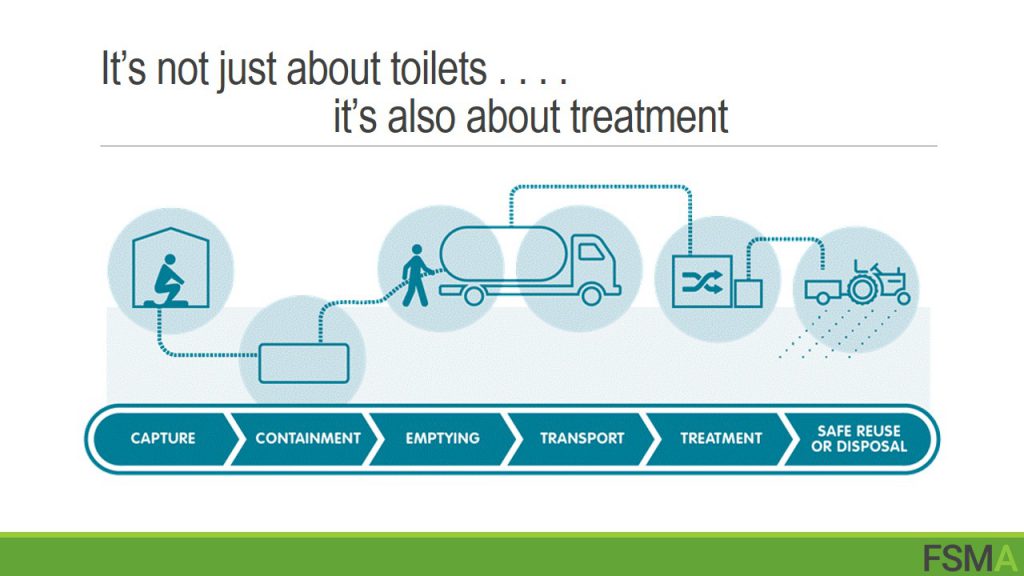
To sum up, collaboration out of the silos, circular technologies, novel cost-sharing arrangements, innovative business models, and delivery platforms can not only achieve universal sanitation coverage faster, but also create employment and income for the poor in their wake.
Report by Prof. Shyama V. Ramani
